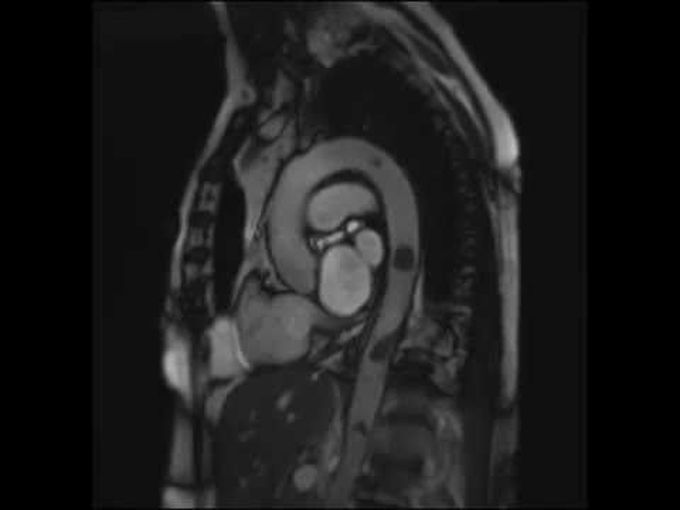


Intraaortic Thrombi Moving in Synchrony with the Cardiac Cycle
An 85-year-old woman with essential thrombocytosis, coronary artery disease, and a remote history of venous thromboembolism presented with abdominal pain, fever, vomiting, and diarrhea. Physical examination revealed tenderness and guarding in the lower abdomen. Laboratory results showed a white-cell count of 11,800 per cubic millimeter (reference range, 3400 to 8200), a d-dimer level of 6.7 mg per liter (reference range, <0.5), a platelet count of 562,000 per cubic millimeter (reference range, 150,000 to 360,000), and a lactate level of 0.8 mmol per liter (reference range, 0.5 to 2.2). Computed tomography of the abdomen and gated aortic magnetic resonance imaging revealed four intraaortic thrombi (arrows) attached to the wall of the descending aorta that moved in synchrony with the cardiac cycle (see video). Edema of the small-bowel mesentery and multiple infarctions of the spleen could also be seen. An exploratory laparotomy was performed owing to the possibility of mesenteric ischemia, but no ischemic bowel was found. The development of mobile thrombi in the aorta is rare; a possible mechanism is thrombus formation on top of atherosclerotic plaques. The patient began anticoagulation therapy, and repeat imaging showed decreases in the size of the thrombi. Unfortunately, candidemia developed, and the patient died approximately 1 month after the initial presentation.

